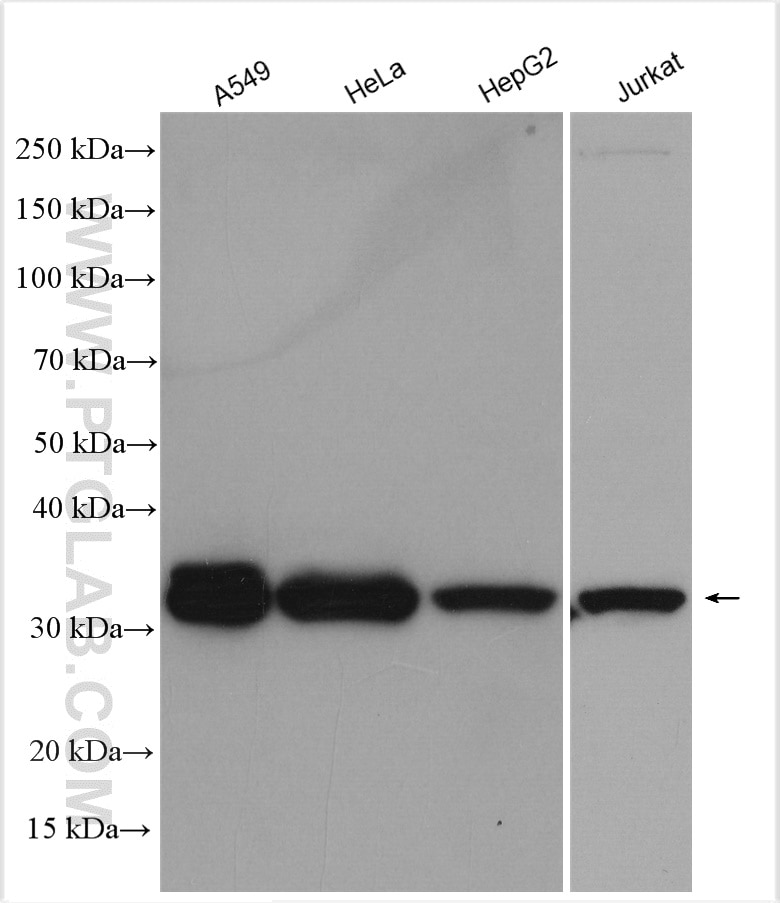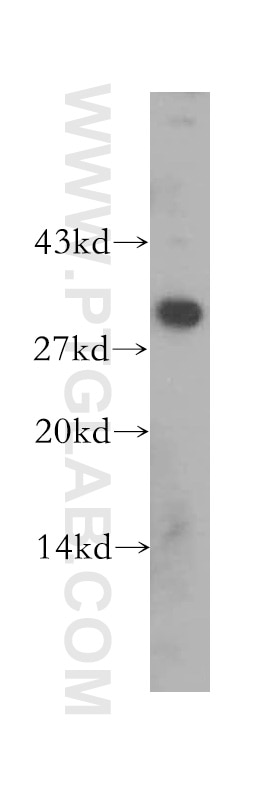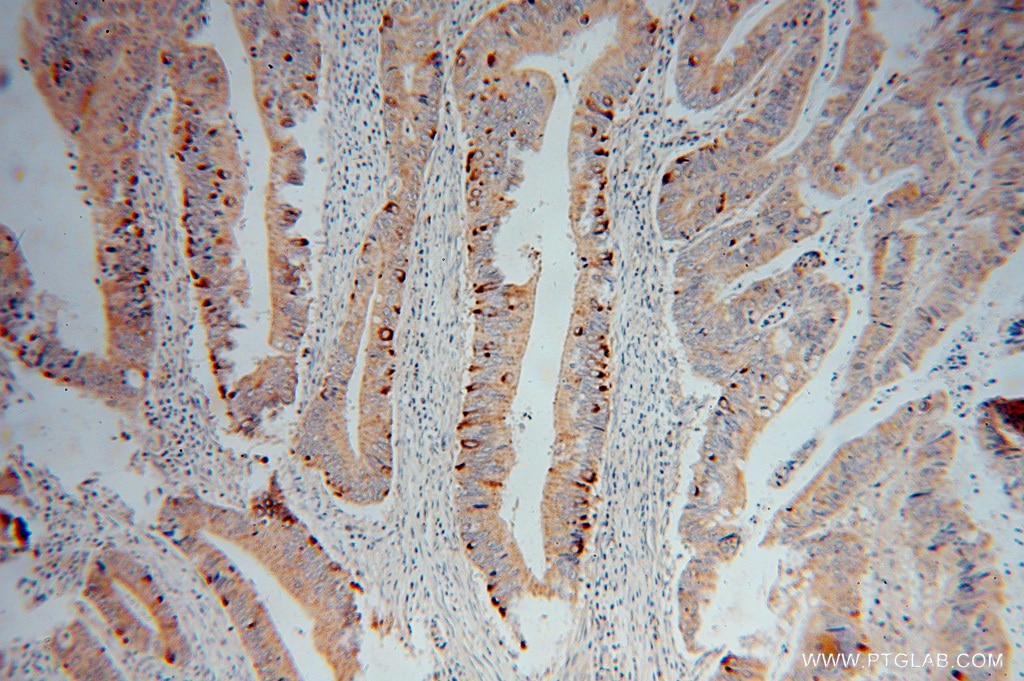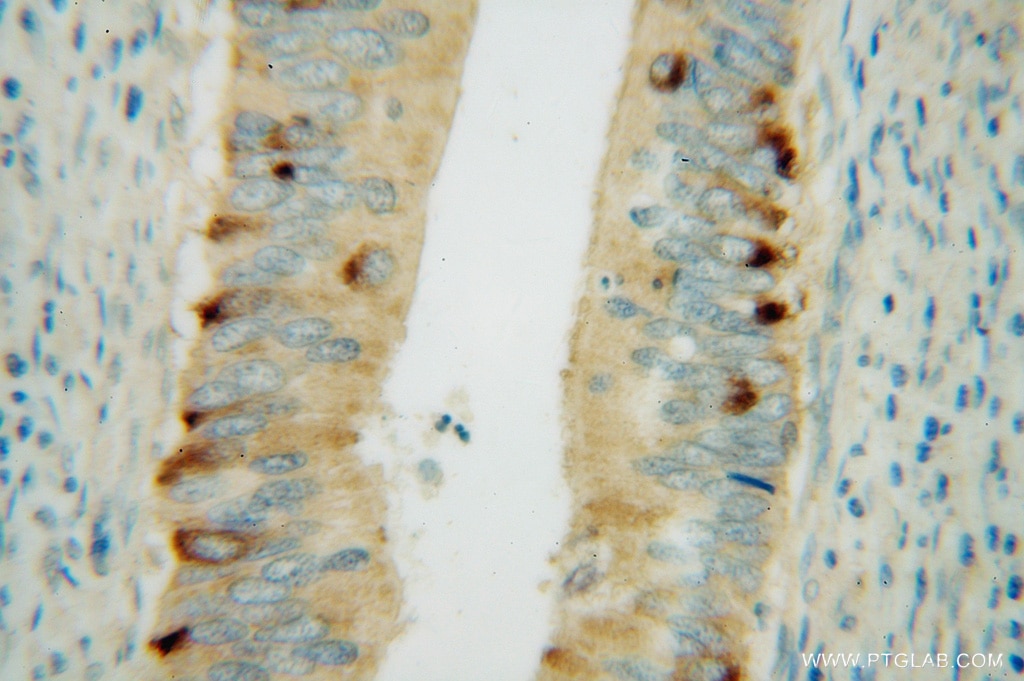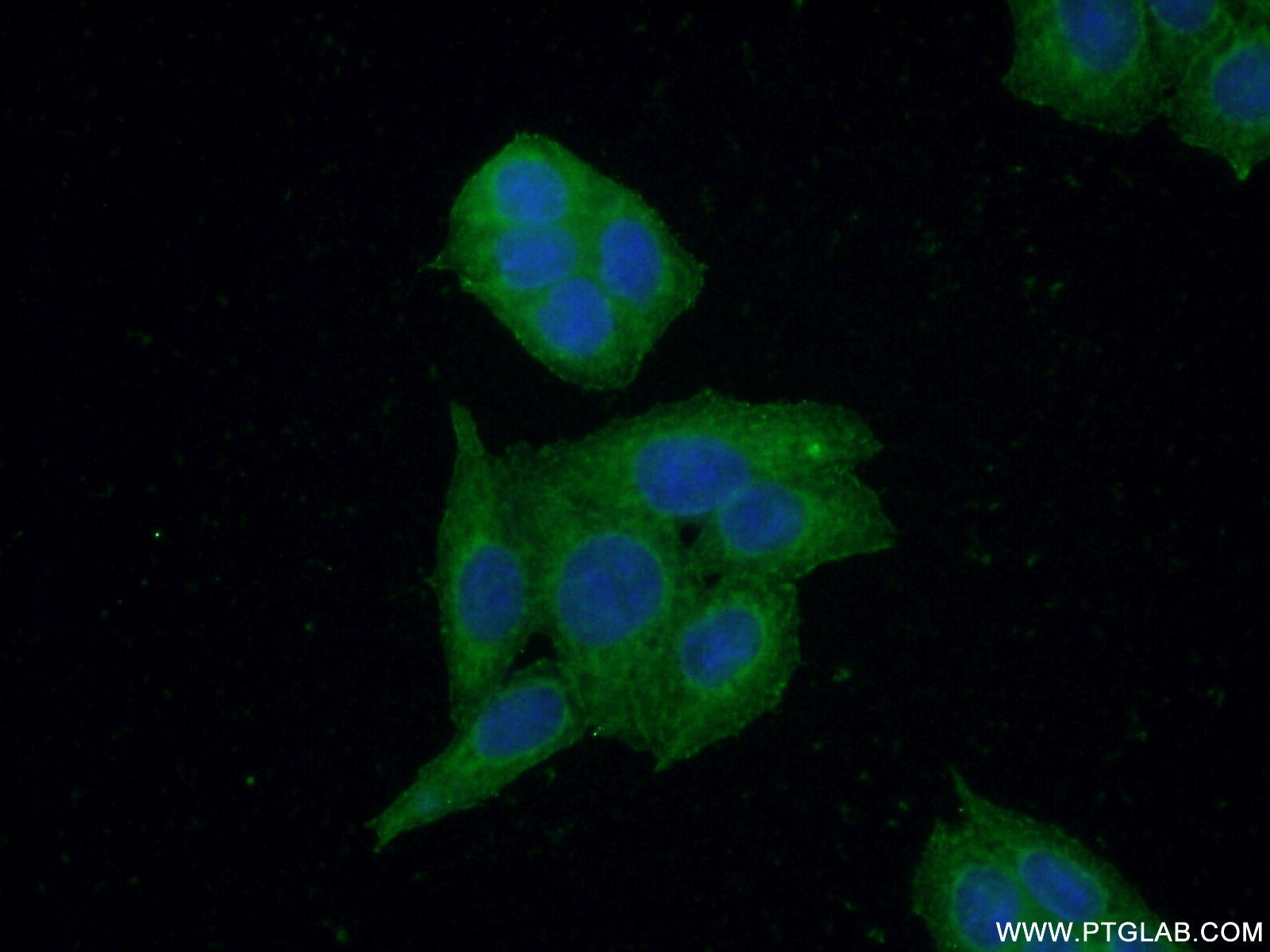CBR3 Polyklonaler Antikörper
CBR3 Polyklonal Antikörper für WB, IHC, IF/ICC, ELISA
Wirt / Isotyp
Kaninchen / IgG
Getestete Reaktivität
human und mehr (2)
Anwendung
WB, IHC, IF/ICC, ELISA
Konjugation
Unkonjugiert
Kat-Nr. : 15619-1-AP
Synonyme
Geprüfte Anwendungen
| Erfolgreiche Detektion in WB | A549-Zellen, HeLa-Zellen, HepG2-Zellen, Jurkat-Zellen, Jurkat-Zellen |
| Erfolgreiche Detektion in IHC | humanes Kolonkarzinomgewebe Hinweis: Antigendemaskierung mit TE-Puffer pH 9,0 empfohlen. (*) Wahlweise kann die Antigendemaskierung auch mit Citratpuffer pH 6,0 erfolgen. |
| Erfolgreiche Detektion in IF/ICC | HeLa-Zellen |
Empfohlene Verdünnung
| Anwendung | Verdünnung |
|---|---|
| Western Blot (WB) | WB : 1:2000-1:12000 |
| Immunhistochemie (IHC) | IHC : 1:20-1:200 |
| Immunfluoreszenz (IF)/ICC | IF/ICC : 1:50-1:500 |
| It is recommended that this reagent should be titrated in each testing system to obtain optimal results. | |
| Sample-dependent, check data in validation data gallery | |
Veröffentlichte Anwendungen
| WB | See 4 publications below |
| IHC | See 1 publications below |
Produktinformation
15619-1-AP bindet in WB, IHC, IF/ICC, ELISA CBR3 und zeigt Reaktivität mit human
| Getestete Reaktivität | human |
| In Publikationen genannte Reaktivität | human, Maus, Ratte |
| Wirt / Isotyp | Kaninchen / IgG |
| Klonalität | Polyklonal |
| Typ | Antikörper |
| Immunogen | CBR3 fusion protein Ag8039 |
| Vollständiger Name | carbonyl reductase 3 |
| Berechnetes Molekulargewicht | 31 kDa |
| Beobachtetes Molekulargewicht | 31 kDa |
| GenBank-Zugangsnummer | BC002812 |
| Gene symbol | CBR3 |
| Gene ID (NCBI) | 874 |
| Konjugation | Unkonjugiert |
| Form | Liquid |
| Reinigungsmethode | Antigen-Affinitätsreinigung |
| Lagerungspuffer | PBS with 0.02% sodium azide and 50% glycerol |
| Lagerungsbedingungen | Bei -20°C lagern. Nach dem Versand ein Jahr lang stabil Aliquotieren ist bei -20oC Lagerung nicht notwendig. 20ul Größen enthalten 0,1% BSA. |
Hintergrundinformationen
CBR3(Carbonyl reductase [NADPH] 3), which Belongs to the short-chain dehydrogenases/reductases (SDR) family, has low NADPH-dependent oxidoreductase activity towards 4-benzoylpyridine and menadione (in vitro). The gene encodes a 31 kDa protein that can catalyze the reduction of many endogenous and xenobiotic carbonyl compounds, including steroids and prostaglandins. The deduced 277-amino acid CBR3 protein is 84% similar to the CBR1 protein(PMID:9740676).
Protokolle
| PRODUKTSPEZIFISCHE PROTOKOLLE | |
|---|---|
| WB protocol for CBR3 antibody 15619-1-AP | Protokoll herunterladen |
| IHC protocol for CBR3 antibody 15619-1-AP | Protokoll herunterladenl |
| IF protocol for CBR3 antibody 15619-1-AP | Protokoll herunterladen |
| STANDARD-PROTOKOLLE | |
|---|---|
| Klicken Sie hier, um unsere Standardprotokolle anzuzeigen |
Publikationen
| Species | Application | Title |
|---|---|---|
Antioxid Redox Signal Regulation of the 20S Proteasome by a Novel Family of Inhibitory Proteins. | ||
Carcinogenesis Thioredoxin reductase 1 protects against chemically induced hepatocarcinogenesis via control of cellular redox homeostasis. | ||
Nat Commun Allosteric regulation of the 20S proteasome by the Catalytic Core Regulators (CCRs) family | ||
World Allergy Organ J Integrated machine learning and bioinformatic analysis of mitochondrial-related signature in chronic rhinosinusitis with nasal polyps |
